Using melodic decoration in your melodies is a great way to spice up any piece of music as they are a way of making a harmonic line more interesting. But what exactly do we mean by melodic decoration? There are quite a few different types of melodic decoration and we will explore them in this article.
Notes that we use as melodic decoration can sometimes be called non chord notes as they are notes that do not feature in our regular chords or chord progressions. The melody line would still work without them, hence the name decoration! A room still functions as a room without the decorations but it sure is a lot nicer with them in!
Each type of melodic decoration has a name And there are seven different decorations that are useful to know. Note that this is different to ornamentation – to learn more about ornamentation then make sure to click here.
The Seven different melodic decorations
- Passing notes (accented, unaccented and chromatic passing notes)
- Auxillary notes (Upper, lower and chromatic)
- Changing Notes
- Anticipations
- Suspensions
- Retardations
- Pedals (tonic or dominant)
Passing Notes
There are three different types of passing notes that you should understand and these are the:
- Accented passing note
- Unaccented passing note
- Chromatic passing note.
Passing notes can be diatonic or they can be chromatic. Remember, if you have a diatonic passing note this means the note moved to will be in the key of the melody and if you have a chromatic passing note this will not be in the key. Both Accented and unaccented passing notes are diatonic and the chromatic passing note is … chromatic!
A diatonic passing note is a note that falls within the key of the piece and will occur between two notes a third apart. For example if you have a C and and E, which are two notes from the C major chord, and we insert an D between these two notes we have added in a diatonic passing note.
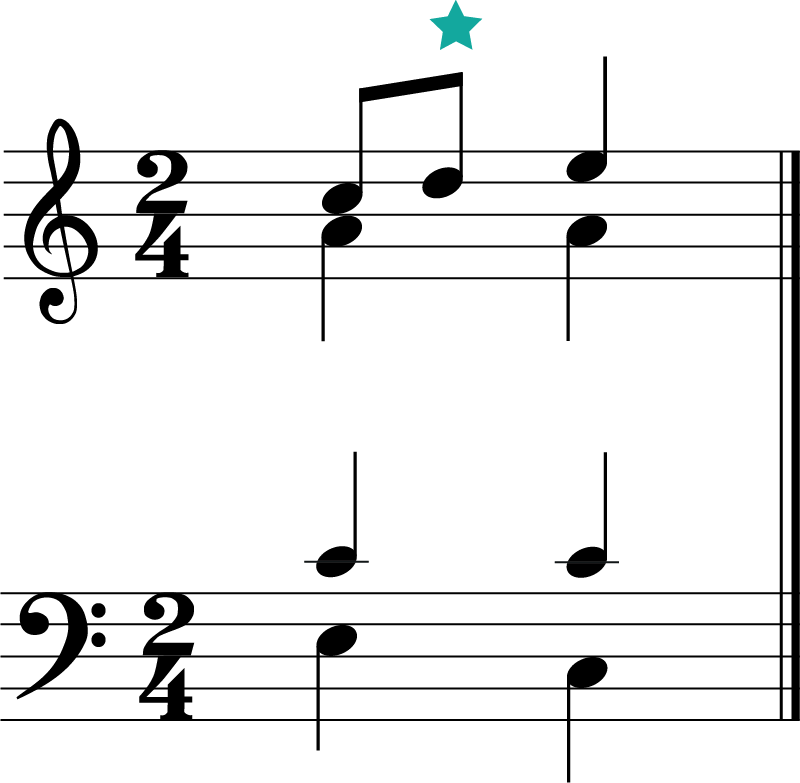
The example above is what we call an unaccented passing note. This is because the passing note falls between two strong beats and is therefore not accented.
Accented passing notes by contrast is a passing note that falls on a beat. An accented passing note can really bring out the dissonance as it is immediately clashing with the chord. Take a look at this C major chord progression.
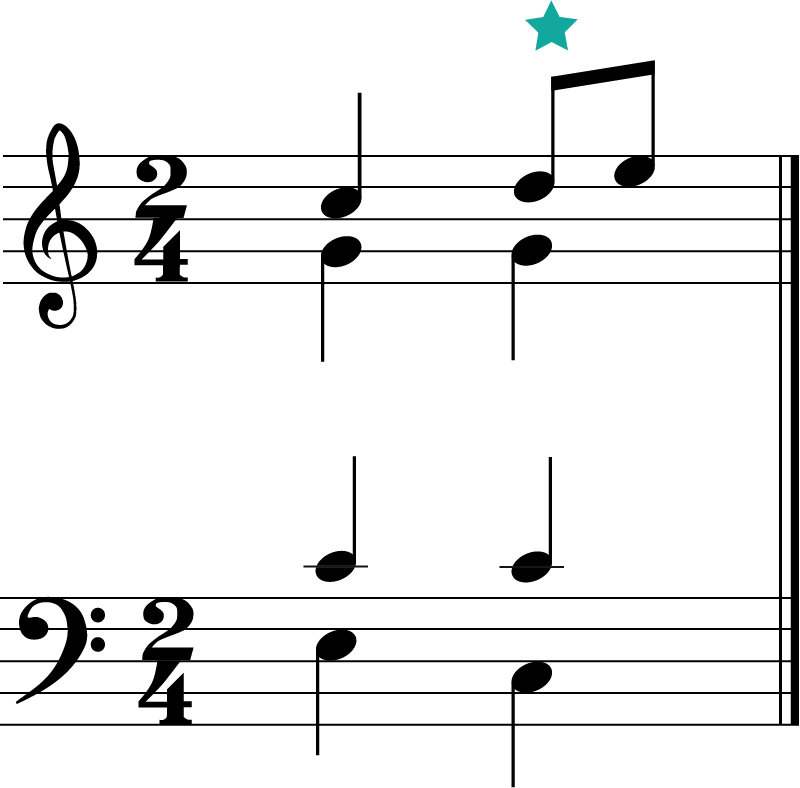
As you can see above we have a D in the C major chord on the beat. We do not have a D in the tonic chord of c major so by doing this, these are called accented passing notes.
A chromatic passing note is one where there is an accidental added as the passing note is note in the key.
Auxiliary Note
Auxiliary notes, sometimes called neighbour notes, are another type of melodic decoration and there are two types. The upper auxiliary note and the lower auxiliary note.
An auxiliary note is a note that falls between two identical notes.
An upper auxiliary note is where we move up by step to a note and then the auxiliary note falls back down a step to the original note.
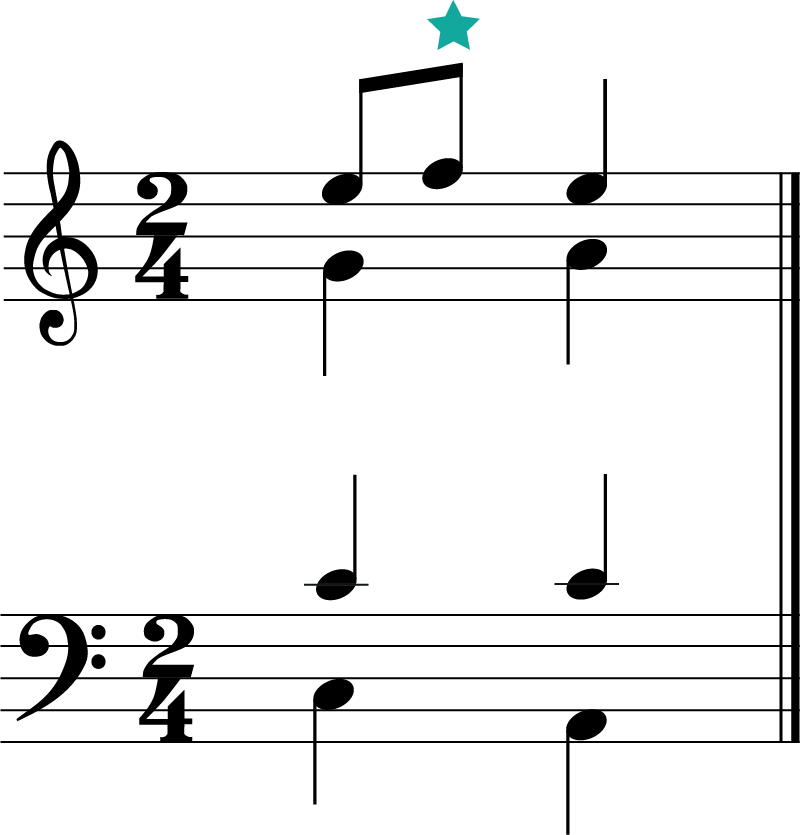
A lower auxiliary note is where we move down by a step to a note and then back up a step to the original note. It resolves upwards.
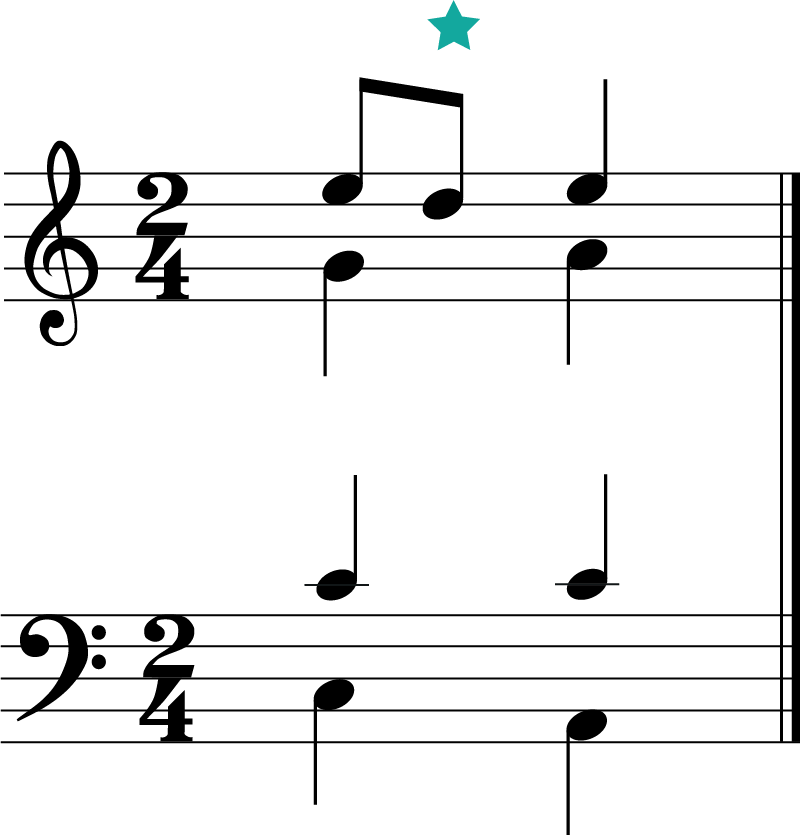
It is also perfectly possible to have a chromatic auxiliary note. This is simply a note that falls outside of the diatonic key that the piece is in. When describing melodic decoration in a piece of music, it is important to state if it is chromatic. If it is diatonic then there is no need to say.
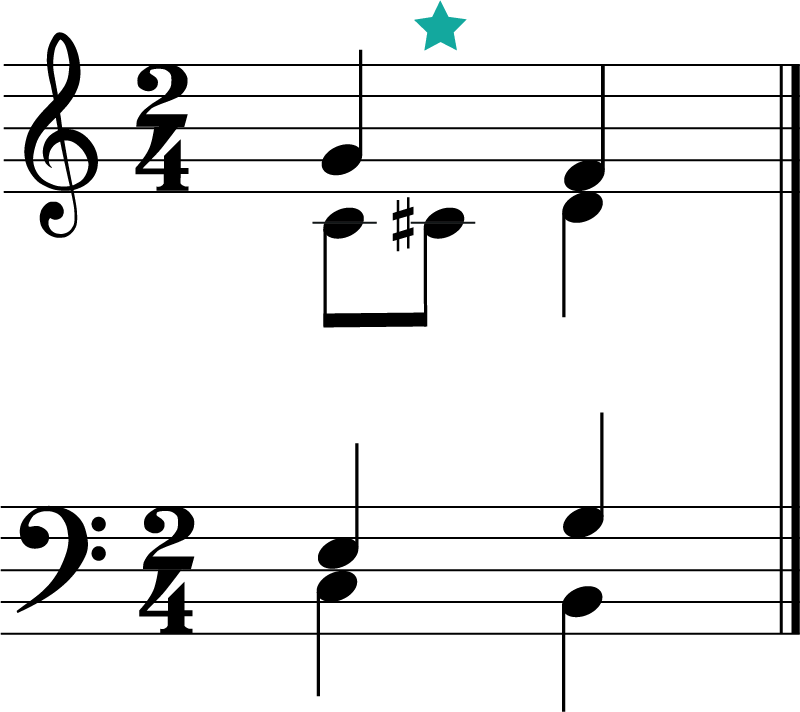
Changing Note
Changing notes are another type of melodic decoration that we can see in our music. A changing note is a combination of a step followed by a leap in the opposite direction or a leap followed by a step in the opposite direction. The note itself will be dissonant to the chord.
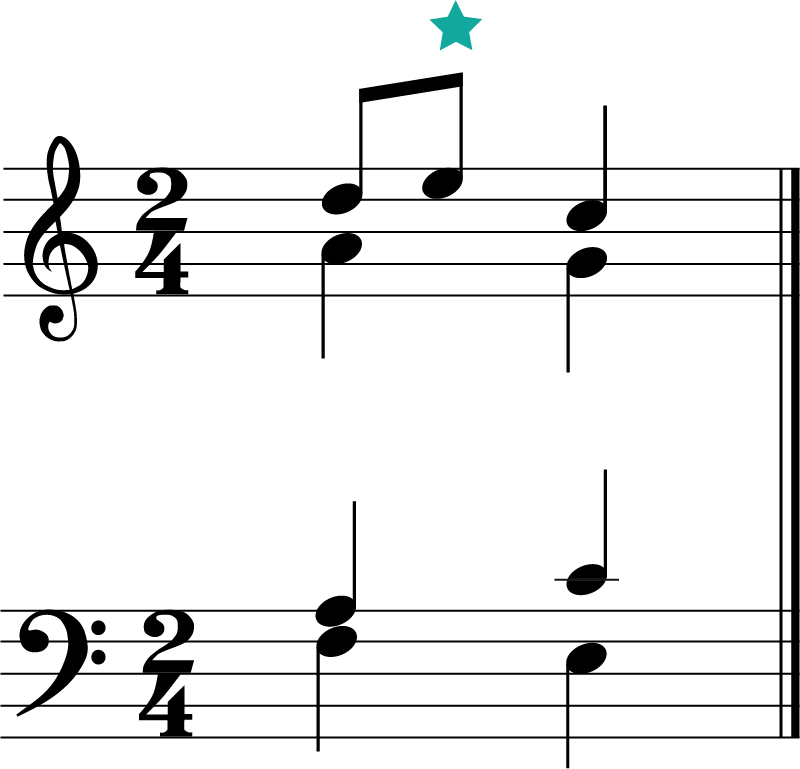
We can also sometimes see the terms ‘cambiata’ and ‘échappée. Both of these words have a slightly different meaning but are both changing notes.
An échappée (the the image above) is a changing note that starts with a step, it does not include changing notes that start with a leap.
A cambiata is an Italian term that means ‘changing note’ and so includes both types!
Anticipations
An anticipation is what it says on the tin! It is simply when we write one chord note earlier than the rest of the chord, literally anticipating what is about to come!
It is usually in the beat before the rest of the chord sounds. Take a look at these two chords, a plagal cadence in the key of D major. A G major chord followed by a D major chord.
The notes in the G major chord are G-B-D and the notes in the D major chord are D-F#-A. If we add an A as a quaver after the initial playing of the G major chord, this note is anticipating our D major chord.
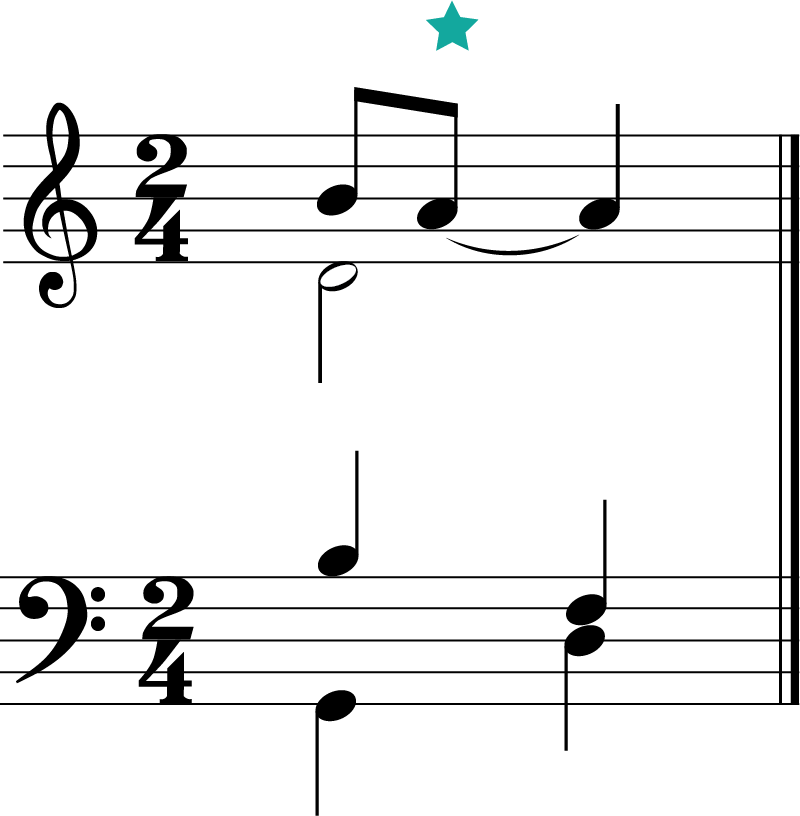
The A is not a chord note of G major and therefore is considered non-chord note.
Suspensions
A suspension is the exact opposite of an anticipation note. An anticipation note played the note before the chord sounded, but a suspension note is where we write one of the chord notes later than the rest of the chord. The note will be held during the beat after the rest of the chord has sounded.
Take this plagal cadence in the key of G major. The two chords in this plagal cadence are C major with the notes C E G followed by G major with the notes G, B, D.
If we hold the C from the C major chord over into the G major chord, we have created a suspension. The C is a suspension.
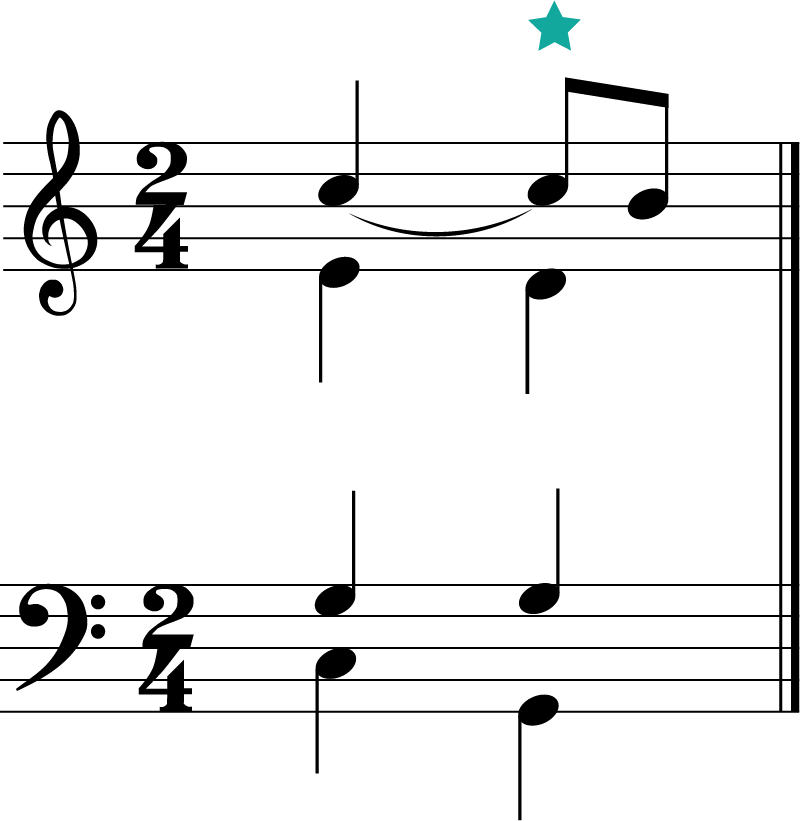
Retardations
A retardation is simply a type of suspension. We most commonly see a suspension resolving downwards, but in a retardation the non-chord note resolve upwards!
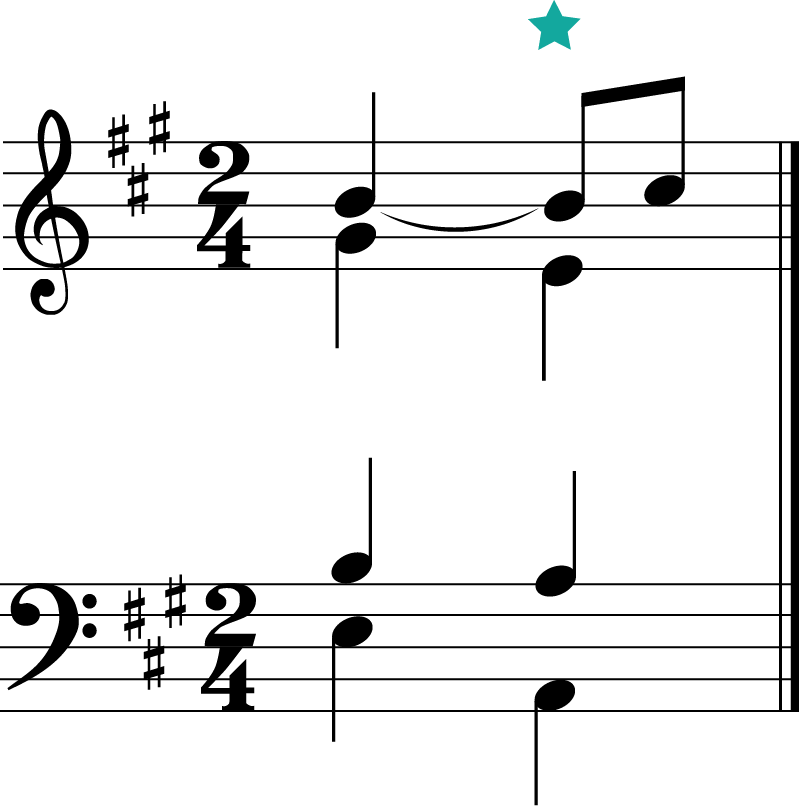
Notice how in the example above we have the B from the previous chord held over into the next chord but resolving up to a C#.
Pedals
A pedal is either a tonic or dominant note that is played in one part of an ensemble continuously while the other voices change.
You will most usually see a pedal note in the bass but it is also very possible to see one in other voices as well. If the pedal is not in the bass part we call it an ‘inverted pedal’.
A pedal note is either held as one long note or it can be the same note repeated several times.
Here is an example of a tonic pedal in the key of C major:
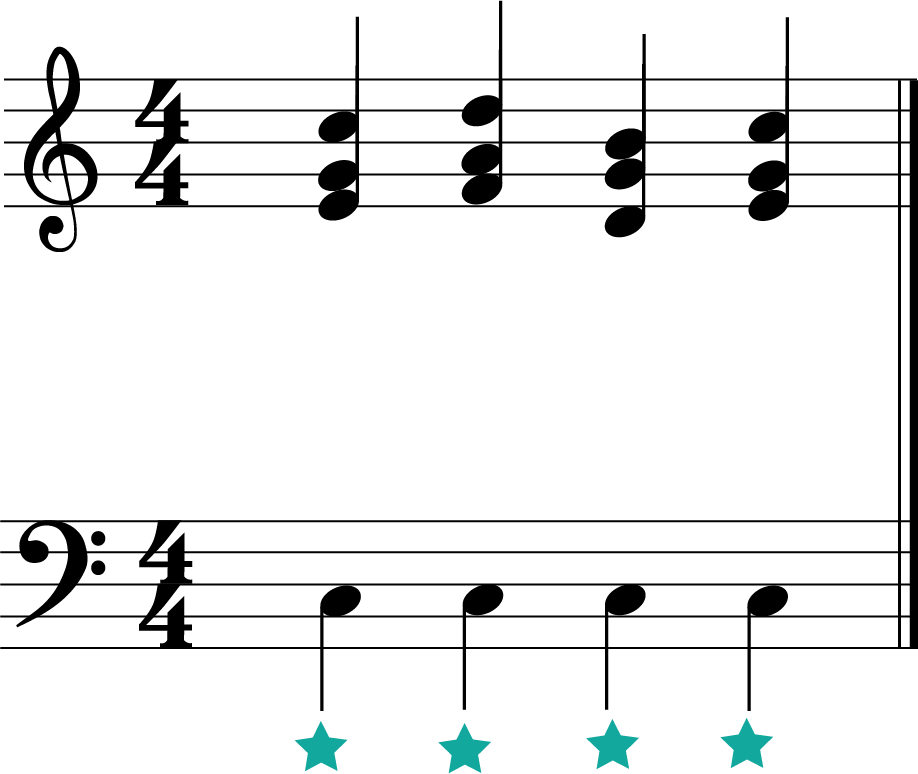
Here is an example of a dominant pedal in the key of C major:
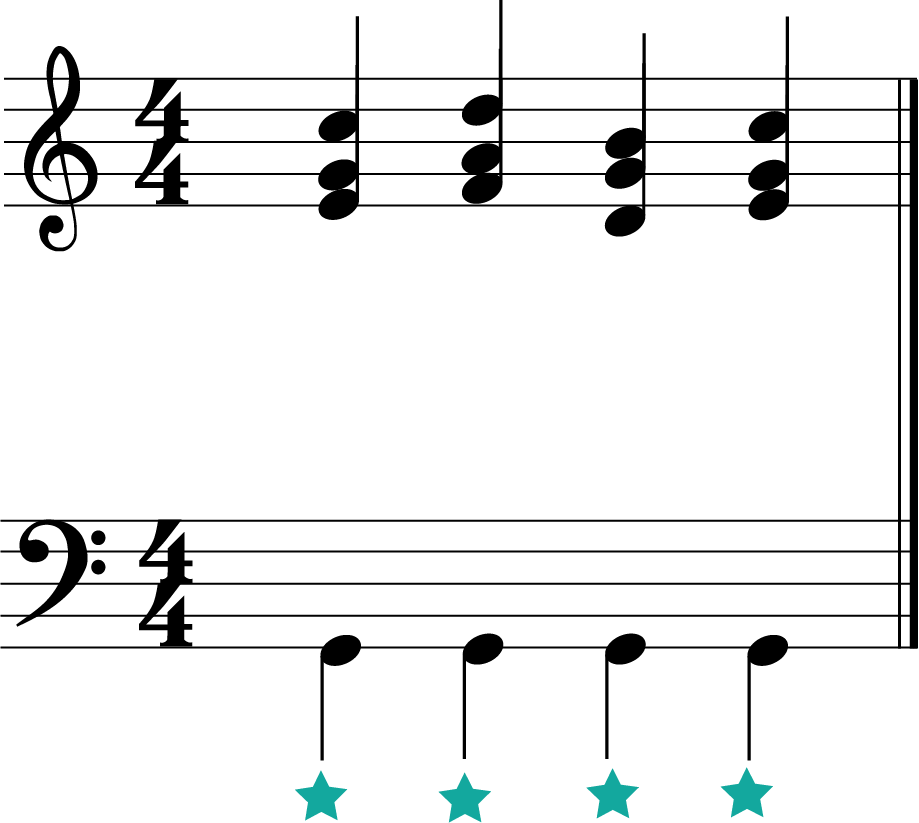
As you can see there are several different types of melodic decoration that can be used to spice up harmonic lines. Making sure you learn all of these is very important, particularly if you are doing the higher ABRSM theory grades.
Examples: The Bach Chorales
J.S. Bach’s Chorales are great examples of all of these types of melodic decoration. There are around 400 of them so you’ll have plenty of choice.
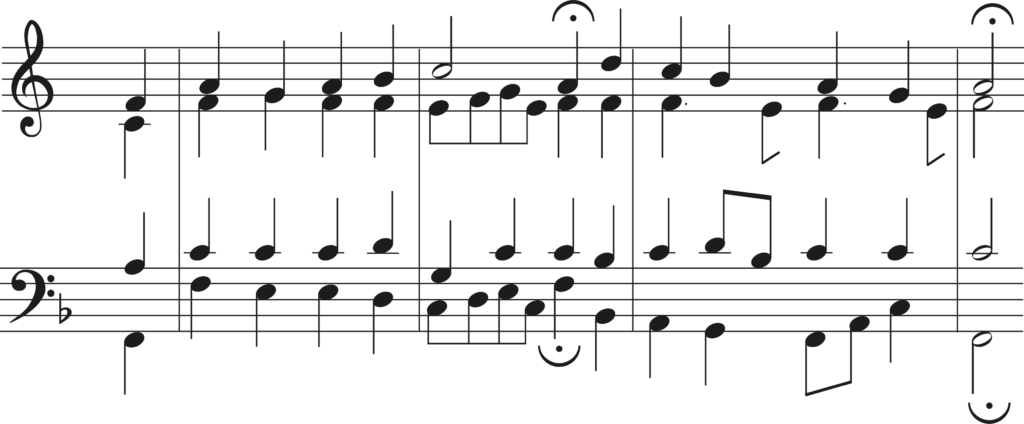
What’s next….?
- Learn about ornamentation with our complete guide.
